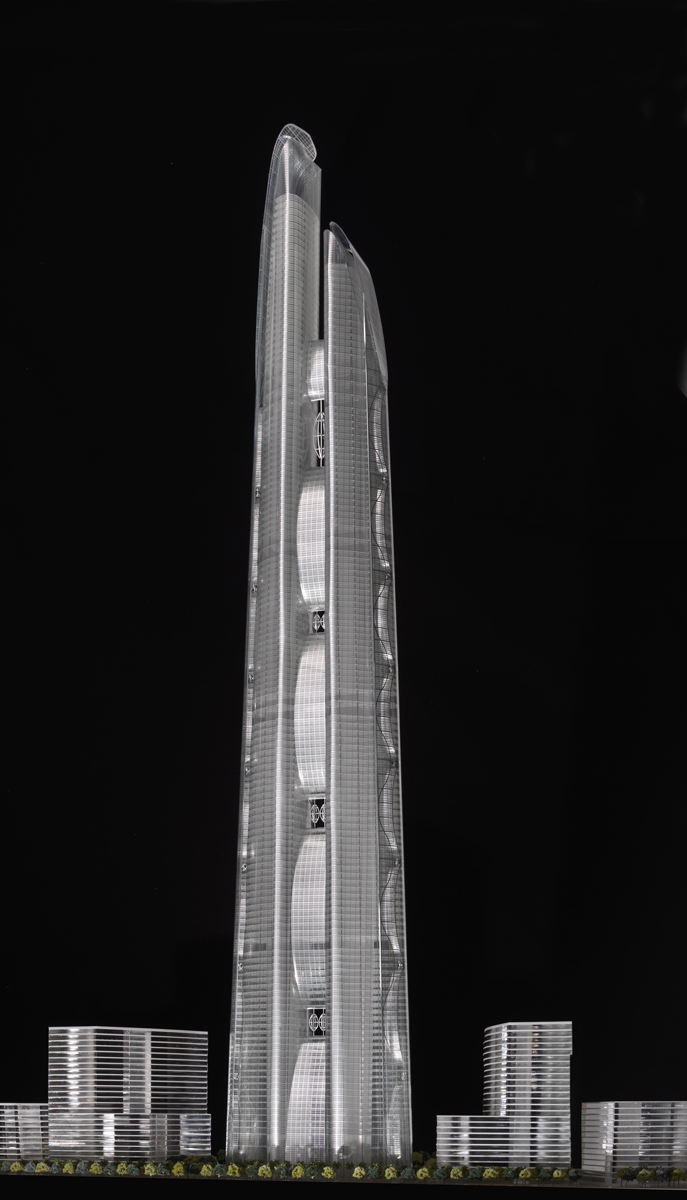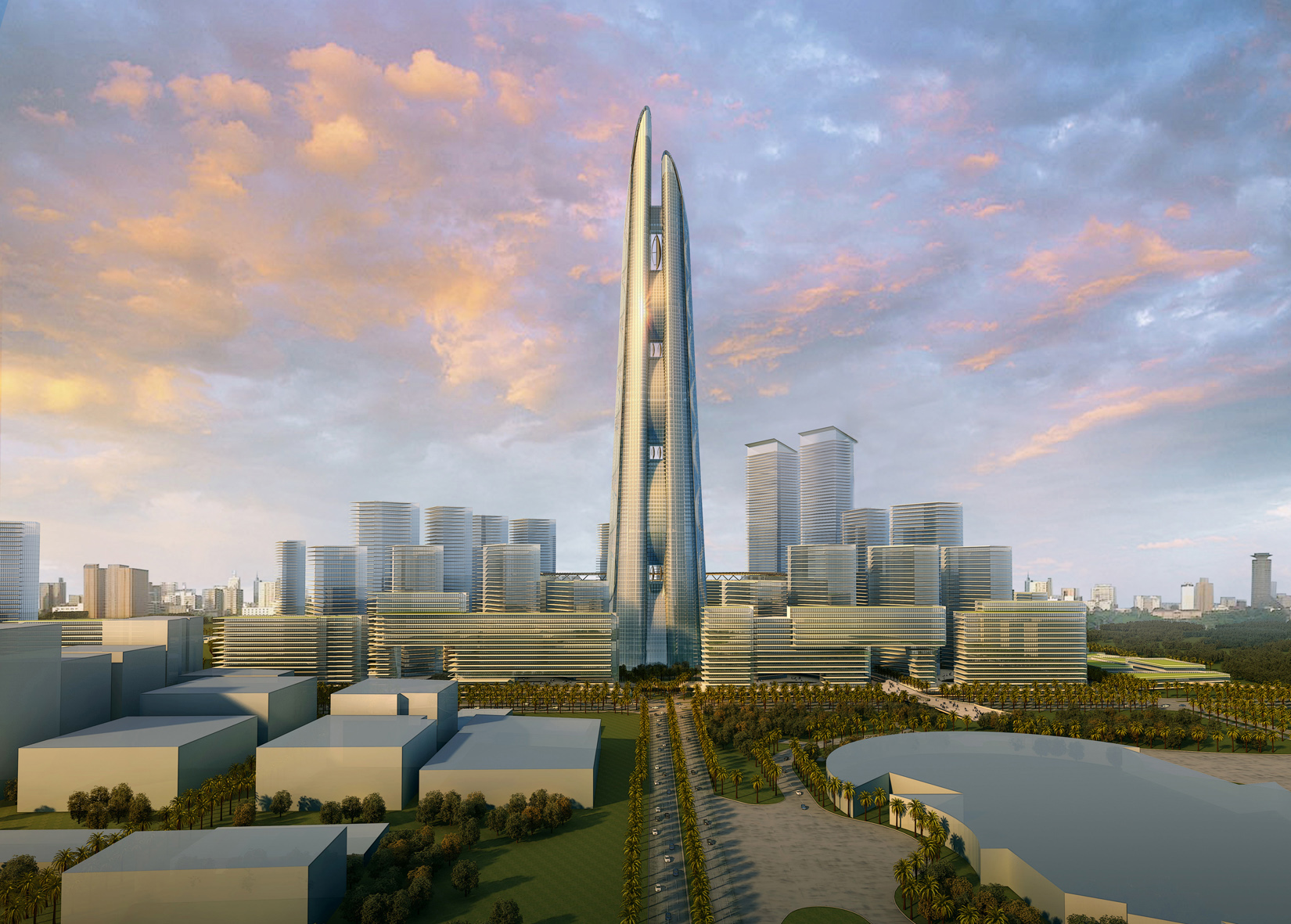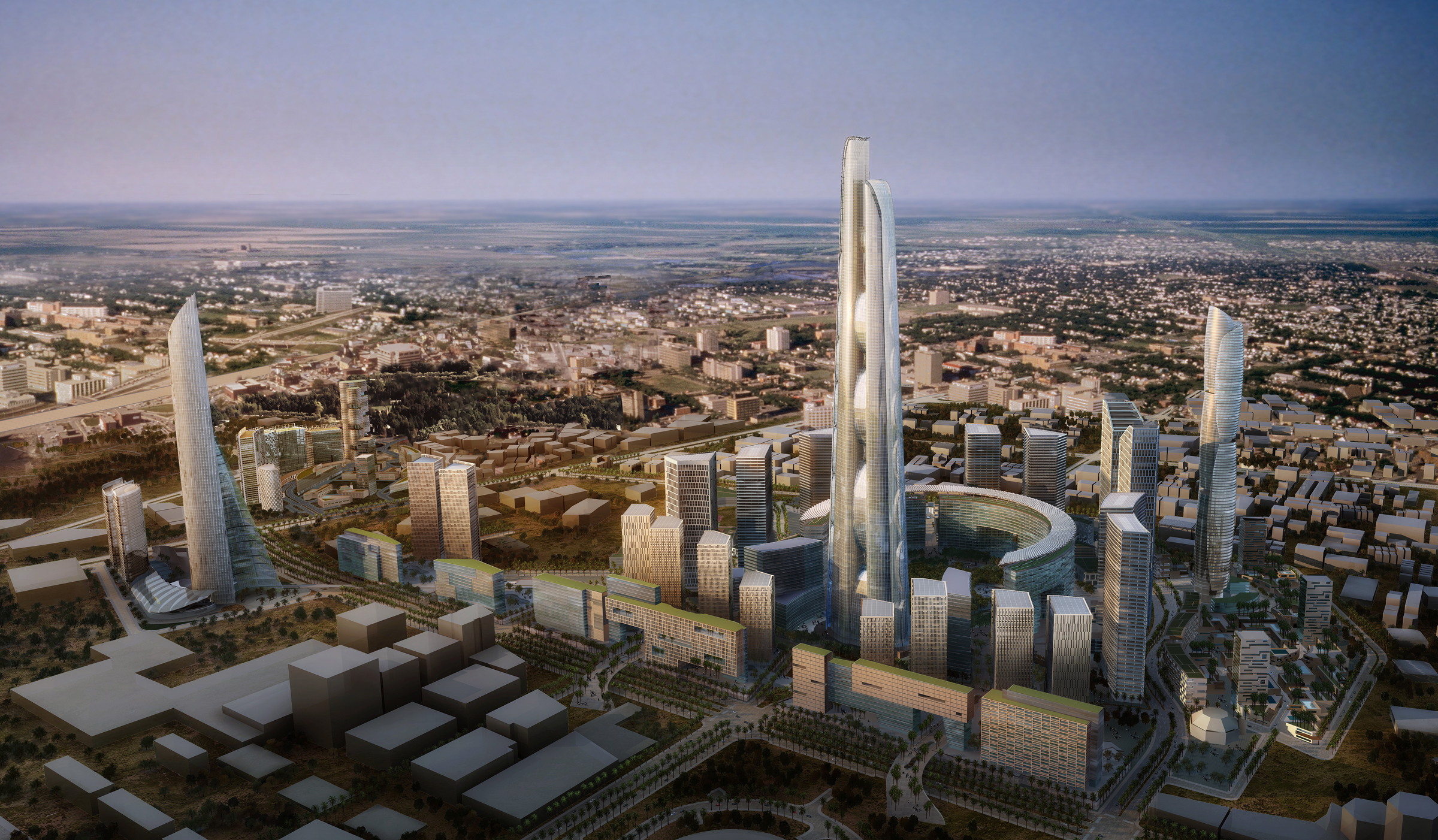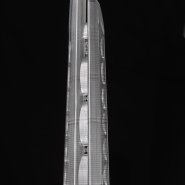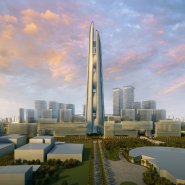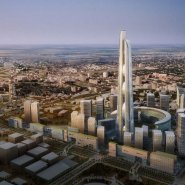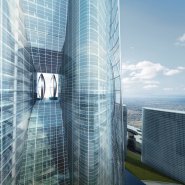Za’abeel Signature Tower 1
Za’abeel Signature Tower 1 is a conceptual, mixed-use tower that was designed with advanced sustainable features. The project explores the concept of a megatall building: two towers that share a connected program and structure that are integrated as one building and one overall community.
The tower is a self-contained district with residential, amenity, office, and hotel functions. The form, orientation, and sheathing attract airflow, harnessing winds at higher altitudes that are then funneled and accelerated into vertical-axis wind turbines.
Active wind turbines generate power by utilizing wind currents with openings in the tower that allow wind to move through and give “relief” to the wind forces as they hit the broad face of a building. The openings also serve to accelerate the wind, generating more power.
The ladder-like form gives the project structural stability, its “rungs” creating a programmatic connection between the two halves. The structural outrigger system links the two main cores—one in each half of the tower—to the perimeter columns.
The tower’s form is defined by the following design concepts:
Extension: The signature building dwarfs all adjacent towers. It is an iconic form that is supported by a structurally solid base.
Elevation: The ladder-like form increases structural rigidity. The “rungs” of the form create both a conceptual and programmatic connection between the two halves.
Attraction: To harness winds at higher altitudes, the building’s form, orientation, and sheathing attracts airflow.
Gateway: The form establishes a distinct focal point. The biaxial arrangement of its composition establishes a hierarchy and its openings evoke a connection through the tower, which acts as a gateway and framing device that recognizes its relationship to the Burj Khalifa, the current world’s tallest tower, to the west.
